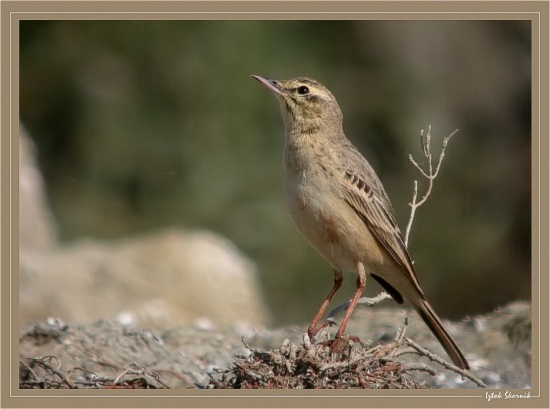- Anthus campestris
Identification
16.5-18 cm (6½-7 in)
The pale sandy plumage, bold eye-stripe and prominent line of black feathers on the median coverts are also useful features.
Juveniles are more heavily streaked and hence are confusable with Richard's Pipits, but are sleeker and always show distinctive dark lores.
Similar Species
The almost complete lack of streaks on the underparts is one of the best ways to tell a Tawny Pipit, though beware summer plumage Water Pipit. Tawny Pipit looks bigger and leggier than other pipits.
Distribution
Europe and Asia and northwest Africa.
Taxonomy
Subspecies
There are 3 subspecies[1]:
- A. c. campestris:
- A. c. kastschenkoi:
- A. c. griseus:
- South-western Kazakhstan to north-eastern Iran, Afghanistan, north-western China; winters to south-western and southern Asia
Habitat
Dry open country including semi-deserts.
Behaviour
Their diet consists mostly of insects, including grasshoppers and locusts; supplemented with seeds.
Breeding
It nests on the ground; the clutch consisting of 4-6 eggs.
Vocalisation
<flashmp3>Anthus campestris (song).mp3</flashmp3>
Listen in an external program
References
- Clements, J. F., T. S. Schulenberg, M. J. Iliff, D. Roberson, T. A. Fredericks, B. L. Sullivan, and C. L. Wood. 2016. The eBird/Clements checklist of birds of the world: v2016, with updates to August 2016. Downloaded from http://www.birds.cornell.edu/clementschecklist/download/
- Handbook of the Birds of the World Alive (retrieved June 2015)
Recommended Citation
- BirdForum Opus contributors. (2025) Tawny Pipit. In: BirdForum, the forum for wild birds and birding. Retrieved 9 May 2025 from https://www.birdforum.net/opus/Tawny_Pipit
External Links




